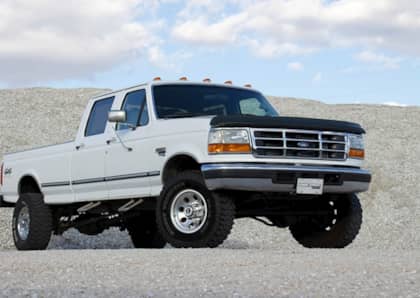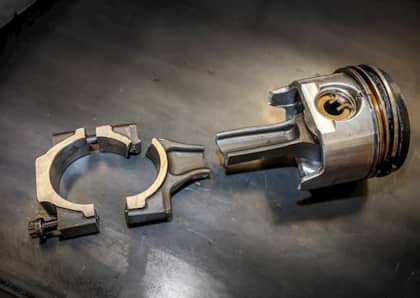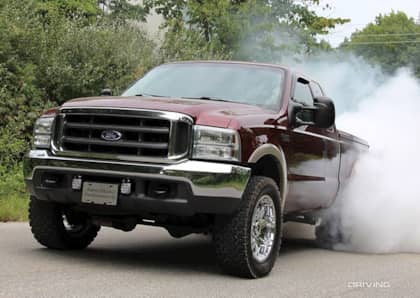Threshold for Pain: Power Stroke Edition
By now, it’s well documented that a considerable amount of horsepower can be stacked on top of the average Power Stroke, Duramax or Cummins bottom end before problems arise. However, the real question is—how far can you push the factory rotating assembly before something goes boom? One common misconception is that higher rpm will kill a diesel engine. Not true. On the contrary, limiting fueling at low rpm and running an engine upstairs in the rpm range is actually much safer on bottom end parts, namely, connecting rods.
Since we as enthusiasts like to deal in maximums, this article was written in an effort to answer the age-old question of “How much?” and in this case we’ll spell out how far you can generally push the factory short block in each Power Stroke mill.
Starting with the 7.3L and covering the 6.0L, 6.4L and current 6.7L, we hope the following information helps you keep the diesel powering your Ford in its proverbial safe zone.
7.3L: Forged Vs. PMR
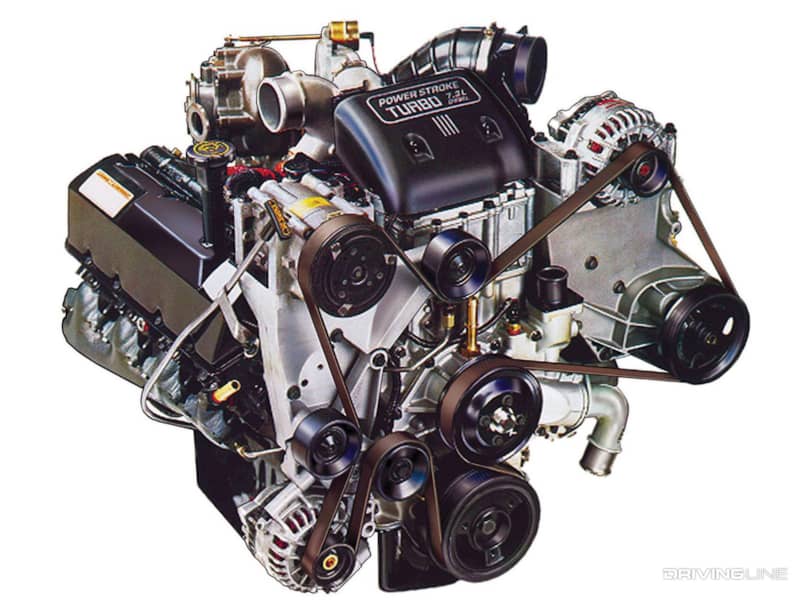
The 7.3L Power Stroke remained mostly unchanged throughout its near 10-year production run. Sure, power ratings increased and a new high-pressure oil pump, injectors turbocharger, fuel pump and PCM debuted in ’99 (aboard the version that graced the first Super Duty’s), but most of the engine’s internals remained virtually the same from ’94.5-‘03. However, one big difference was phased in starting with ’01 model year trucks: powdered metal connecting rods. The aftermarket would soon find that the powdered metal rods (known as PMR’s) couldn’t handle the type of stresses the previous, forged-steel rods found in earlier engines could.
*Note: ’94.5-’00 engines featured forged rods, while most ’01-’03 7.3L’s were equipped with PMR’s
Forged-Steel Rods
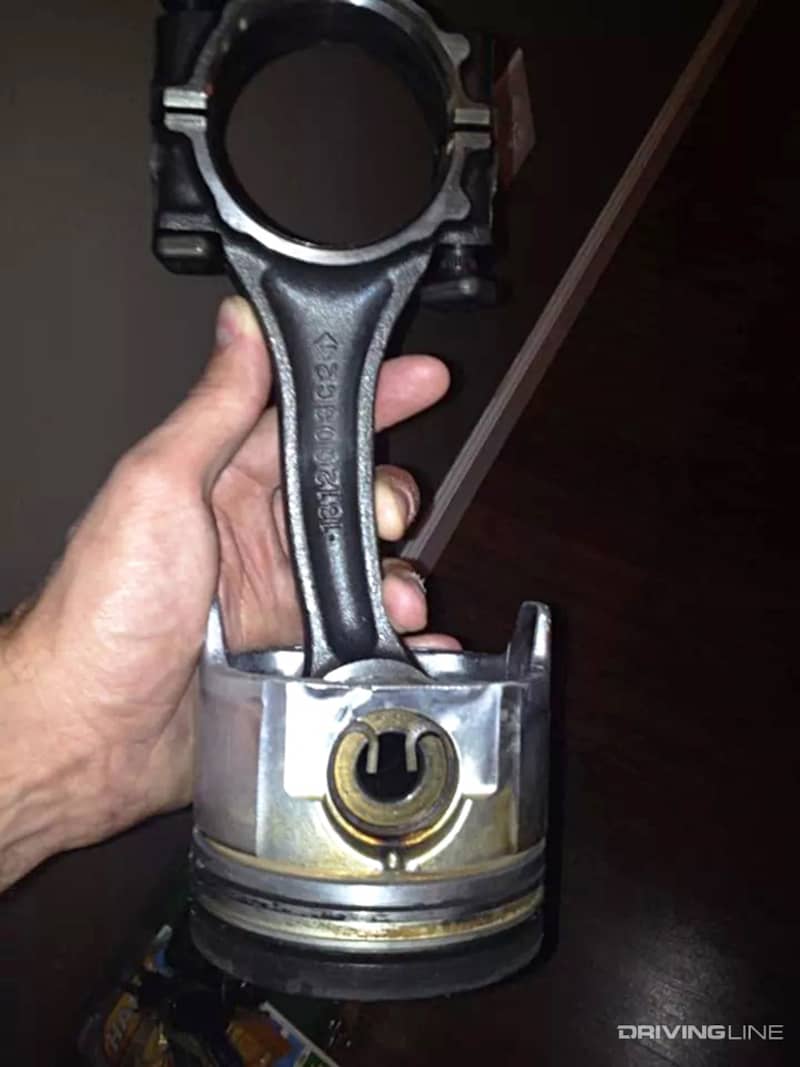
Without a doubt, the forged-steel 7.3L rod is the one you want if you plan to make considerable power with your ’94.5-’03 Ford. The general consensus on forged rods is that 600-rwhp (roughly 1,100 lb-ft) is obtainable and survivable, so long as it’s made with sound aftermarket tuning. What exactly is sound aftermarket tuning? The ability of your calibrator to wait until higher engine speeds before calling for an aggressive ramp-up in injection timing. Too much timing down low (say 1,600 to 2,000 rpm) produces extreme cylinder pressure (i.e. torque)—and too much cylinder pressure will net you bent rods just like in the photo above.
Threshold for Pain: 600 HP (1,100-1,200 LB-FT)
Powdered Metal Rods
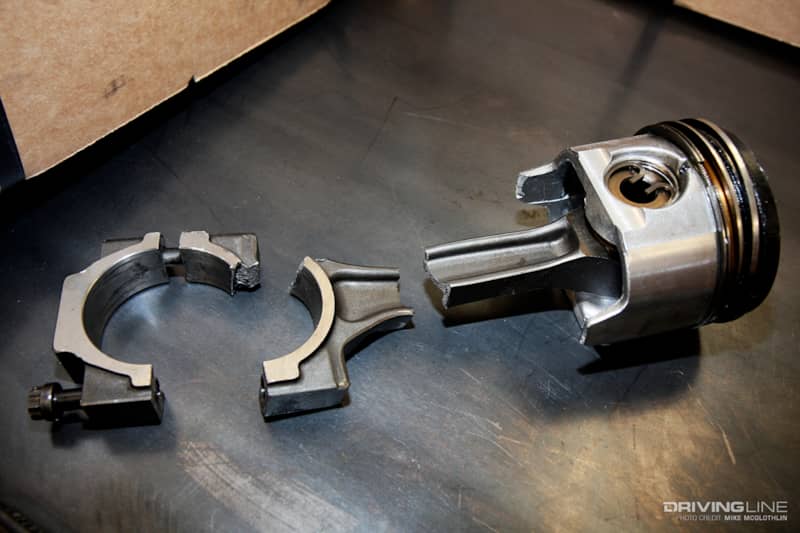
While the forged steel rods bend rather than break, the powdered-metal versions typically snap clean off when they fail. There’s no warning, no gradual drop in compression or increase in blow by. They come apart and can literally destroy everything, often rendering the block irreparable. The rough limit for PMR’s is 450-rwhp and/or 900 lb-ft of torque, although many still call it quits near the 400-rwhp, 800 lb-ft mark. We have seen one PMR-equipped truck make over 600-rwhp and 1,100 lb-ft—but the engine lasted less than a year.
Threshold for Pain: 450 HP (850-900 LB-FT)
The Problematic 6.0L is Surprisingly Stout
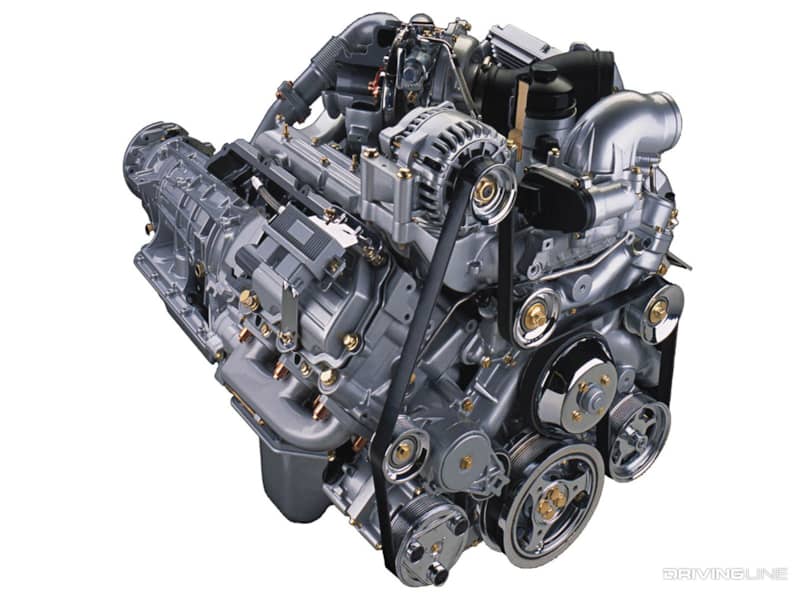
Despite the 6.0L Power Stroke receiving a (deserved) bad wrap for its design flaws, emissions system shortcomings and temperamental nature, its bottom end is quite robust. Equipped with a bed plate from the factory (unlike the 7.3L), main cap walk is a non-issue and the engine’s short stroke and four-valve cylinder head lends itself to an engine that prefers to live at higher rpm. In its natural state, the 6.0L experiences less rod-bending torque.
A Much-Stronger PMR
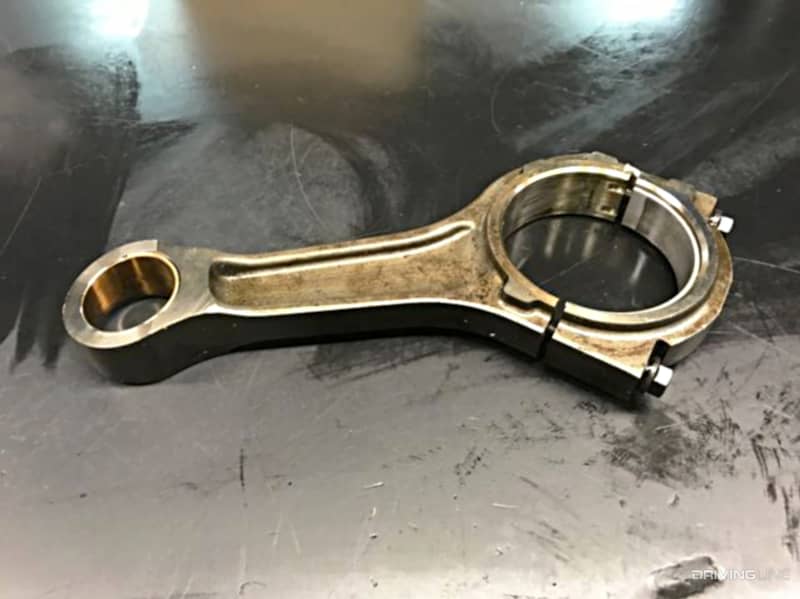
Like the rods found in late 7.3L engines, the units found in all 6.0L Power Strokes are manufactured using powdered metal. However, the rods used in the 6.0L are vastly stronger than what was employed in the 7.3L. When the same tuning theory is applied (waiting until higher rpm before pouring on the fuel), the 6.0L rods can handle as much as 800-rwhp (and 1,300 to 1,400 lb-ft) before they’re officially on borrowed time. This is why, outside of the extreme side of the aftermarket, you don’t see a lot of 6.0L engine builds receiving billet rods.
Threshold for Pain: 800 HP (1,300-1,400 LB-FT)
Anything Can Happen…
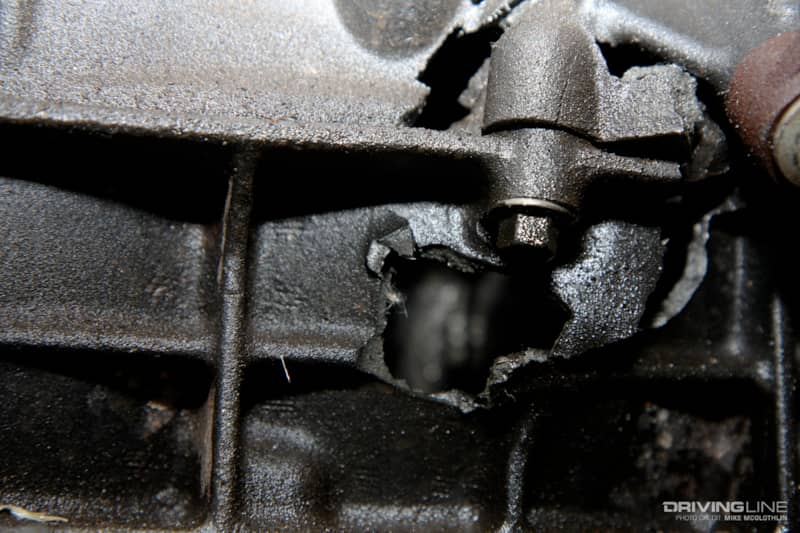
Not all engines are created equal. And, not all owners run reputable performance parts. While the 6.0L Power Stroke’s rods are capable of handling 800-rwhp, the owner of this ’04 F-250 managed to send one through the block at the 500-rwhp level. Poor tuning, which called for obscene timing at low rpm and an injection control pressure value the HEUI system would never be able to achieve, produced a big torque figure below 2,000 rpm (i.e. high cylinder pressure) which ultimately led to a connecting rod leaving the block.
6.4L Weak Link = Pistons
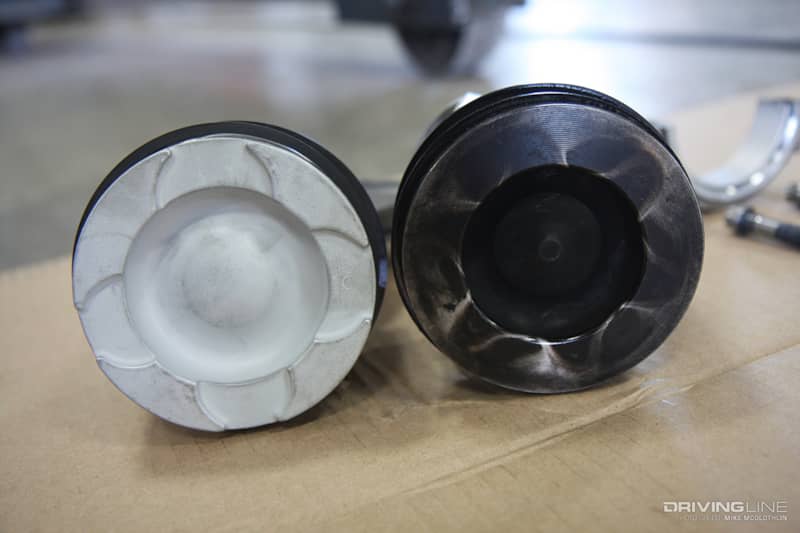
When it comes to the 6.4L Power Stroke, you’re more likely to damage a piston before hurting a connecting rod (although we’ve seen crummy tuning bend rods at the 550-rwhp mark). The factory cast-aluminum pistons are known to crack in both high horsepower and completely stock configurations. When a piston fails on a lower horsepower engine it’s usually attributed to high mileage fatigue. When it happens on a higher horsepower engine, most blame the piston’s design. When pursuing big power, it’s common for enthusiasts to opt for the heavy-duty pistons found in International’s MaxxForce 7 engine (the 6.4L’s single turbo, commercial-duty brother). The MaxxForce 7 piston features a larger bowl and a different style lip to better cope with heat. In the 6.4L aftermarket, it has a reputation for holding up to 1,000-rwhp or more. A fly-cut and thermal barrier coated MaxxForce 7 piston is shown above on the left vs. a factory 6.4L Power Stroke piston on the right.
Compression-Resistant
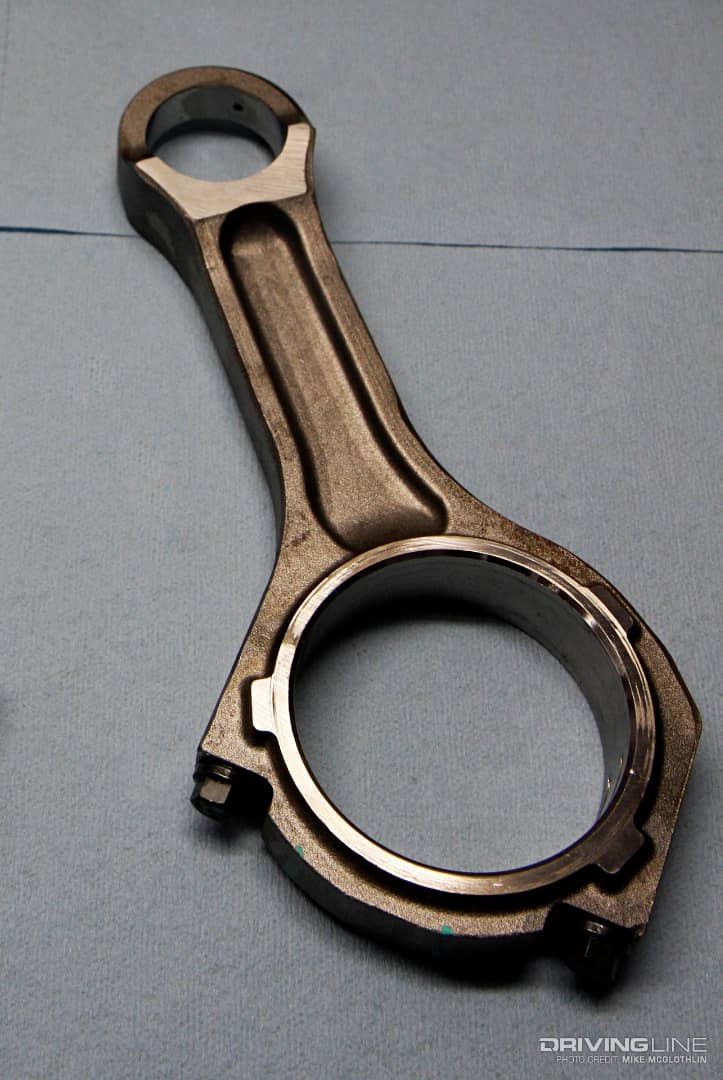
As far as the 6.4L’s connecting rods are concerned, they’re the burliest units to ever reside inside a Power Stroke. With the right combination of air (turbos), fuel (injectors and high pressure fuel pumps) and especially tuning, they’re capable of handling more than 900-rwhp and 1,500 lb-ft of torque. In all-out competition, we’ve even seen numerous 6.4L-powered ’08-’10 Super Duty’s clear four-digit power without issue. When rod failure does occur, it typically happens on trucks with compound turbo arrangements, where excessive boost was accompanied by drive pressure that got way out of hand (100+ psi).
Threshold for Pain: 900+ HP (1,500-1,700 LB-FT)
6.7L: Latest But (Arguably) Not Greatest
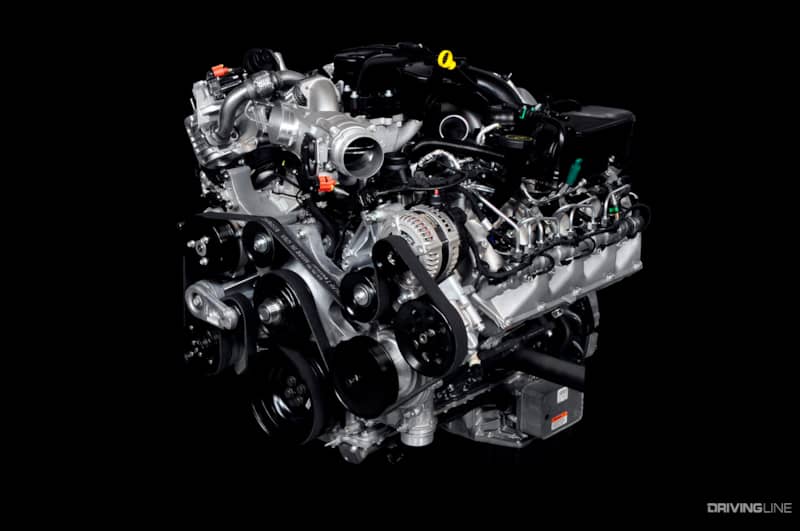
There is a lot to like about the 6.7L Power Stroke. In particular, its injectors can support as much as 700-rwhp without modification (along with a second high-pressure fuel pump and the right turbos in the mix). However, in an effort to lighten up the rotating assembly, Ford chose a connecting rod that is considerably smaller (material-wise) than what was employed in the 6.4L. In fact, a factory 6.7L rod is smaller and weaker than the one found in the 6.0L. As far as numbers go, 700-rwhp (and 1,300 to 1,500 lb-ft) puts the 6.7L’s powdered-metal connecting rods on the brink of destruction.
Threshold for Pain: 700 HP (1,300-1,500 LB-FT)
Draw the Line at 700 Ponies
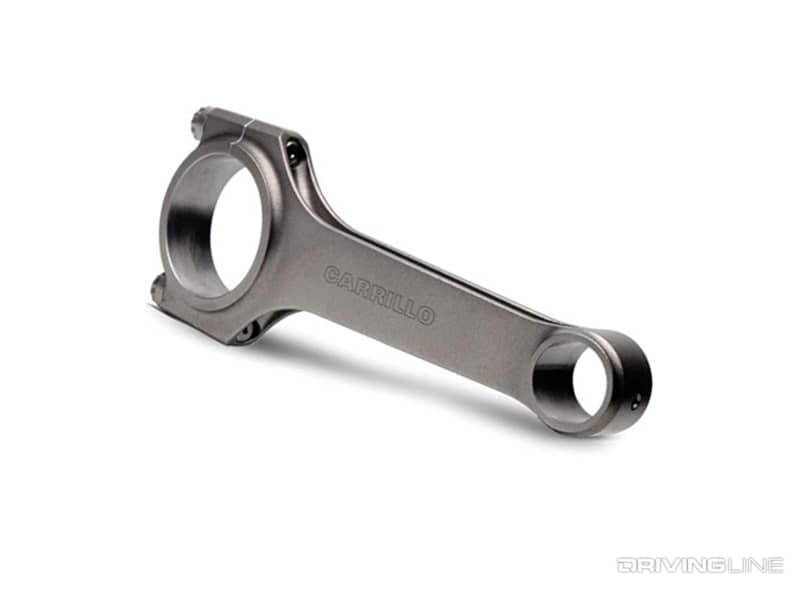
If you’re venturing past 700-rwhp, an aftermarket set of connecting rods is highly recommended. Several horsepower junkies with windowed blocks and rods in pieces can attest to this. Due to the amount of low-rpm torque the 6.7L Power Stroke can produce, it behooves enthusiasts to upgrade rods anytime plans to run compound turbo configurations are on the table. Both Crower and Carrillo (pictured above) make an aftermarket rod capable of handling pretty much anything you can throw at these engines.




